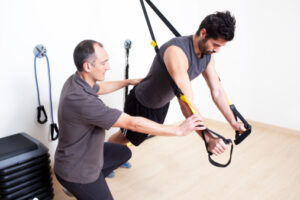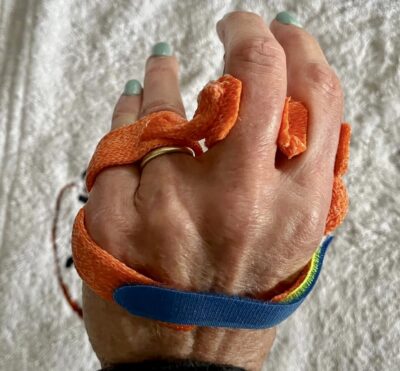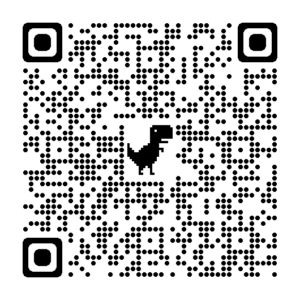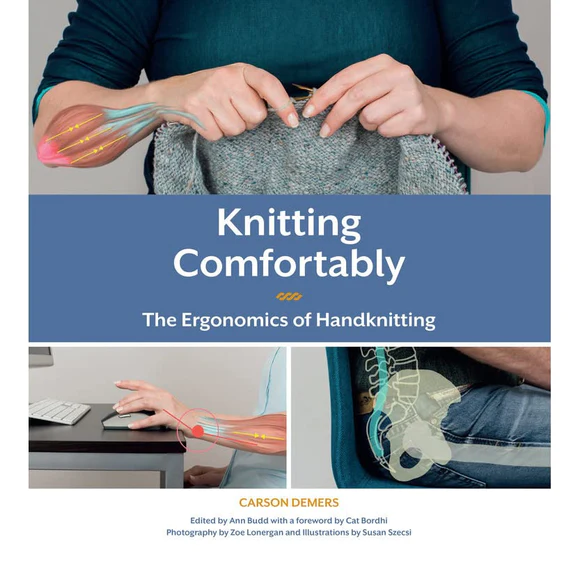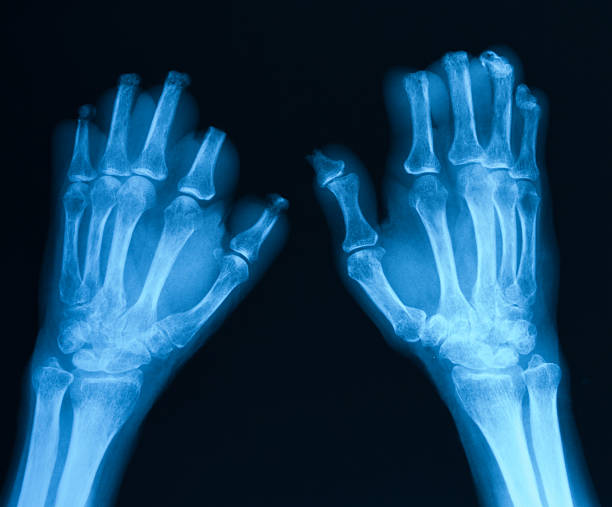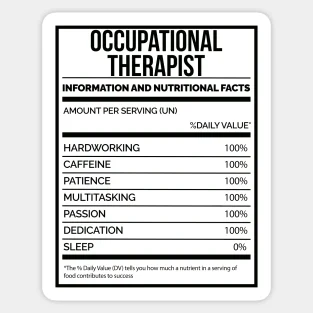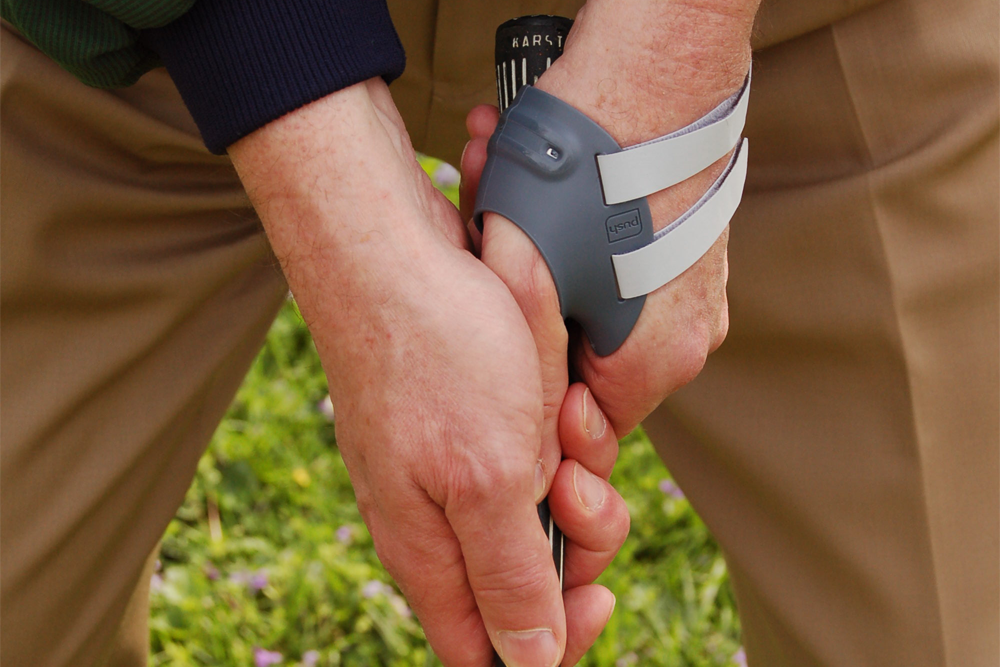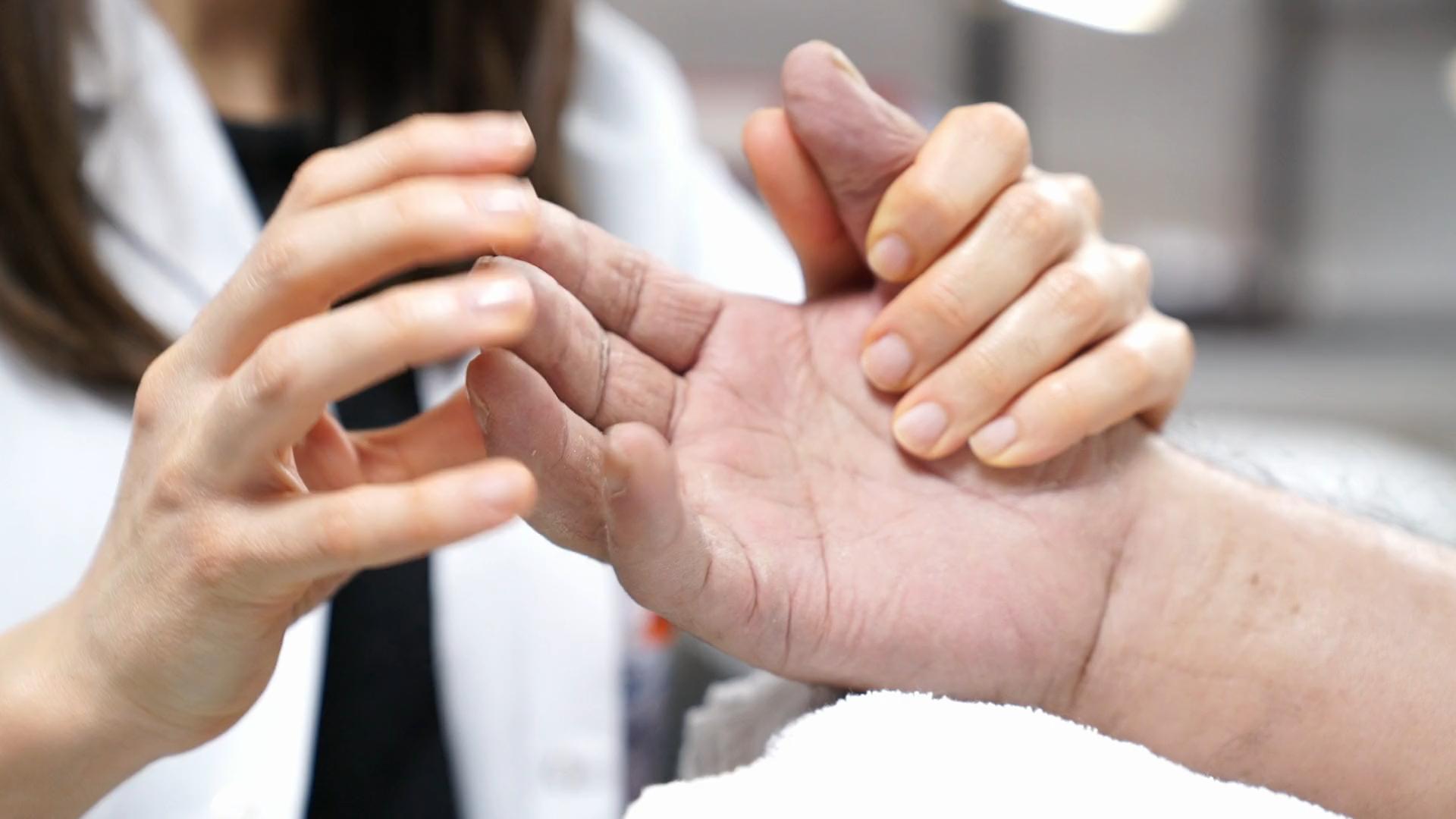Knitting: facing the painful truth
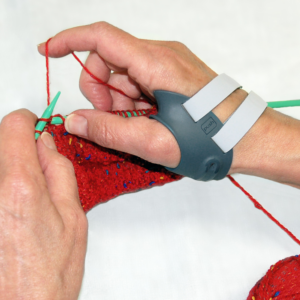 The author of Knitting Comfortably said: “ knitting connects me to my whole brain by allowing me to exercise my creative hemisphere and requiring that I analyze, calculate and articulate the design so it can be manifested through yarn and needles by myself and by others.”
The author of Knitting Comfortably said: “ knitting connects me to my whole brain by allowing me to exercise my creative hemisphere and requiring that I analyze, calculate and articulate the design so it can be manifested through yarn and needles by myself and by others.”
I on the other hand, have only completed 2 knitting projects in my lifetime – a sweater too long and bulky to ever wear outside of the house and a scarf using eyelash yarn to make it fuzzy and faster. But it became an emotional art project when I tried to focus on knitting while watching my mom fade away with pancreatic cancer, but still having a sense of humor when I had to unravel yet another row of dropped stitches. Needless to say, the yarn and large gauge needles are still in my craft room with all the tears it collected that spring!
So, I am writing this in the capacity of a hand therapist, not a knitter.
My clients are always surprised when they learn that their injuries may be caused by something as “non-athletic” as knitting. The injuries happen over time from an accumulation of forces on the smaller finger joints (most often the base joint of the thumb). And Repetitive Strain Injuries (RSI) isn’t caused just by the work your body does to knit, but also by all the other times you are in the same position, moving in a similar movement pattern.
There are a myriad of reasons for painful hands when you knit or crochet, and I will name the top 5 I see in a hand therapy clinic:
Tendonitis – inflammation of a tendon, the structure that connects muscle to bone. They travel within a sheath and could have stress / tension when you hold onto items for a prolonged period of time. This increases pressure within the sheath and you could have a burning type of pain on the thumb side of your wrist.
Nerve compression eg. Carpal tunnel symptoms – The roof of the carpal tunnel is formed by the wrist bones and floor a band of tissues between the bases of thumb and little finger. The space could get confined and most tendon (“ropes”) move dynamically through there as we move our hand.
Thumb joint might “slide”, leading to cartilage eroding at a faster pace. That leads to a “grinding” feeling or “clunk” in the base of thumb joint and abnormal position (often the thumb looks like a letter “Z”)
Deconditioning: we don’t move much when we get so involved in a knitting project and our circulation is compromised. Muscle have less blood supply to help with regeneration of stressed tissues and we might feel we need to grip tighter.
Poor posture that leads to shoulder / elbow / wrist pain – if we don’t support our trunk / back, we might compensate in other ways (turning wrist in or gripping harder). The loss of range of motion impacts our posture and ultimately our function.
I was introduced to a wonderful resource by a client who was both a dentist and an avid Knitter. The book is called: Knitting Comfortably – The ergonomics of handknitting by Carson Demers. Worth putting on your Christmas list.
A thorough evaluation by a hand therapist is recommended to assess your specific challenges. You can go to https://www.htcc.org/ to find a specialist near you.
Self Care Recommendations could include:
Take frequent breaks from knitting (set your timer for 20 min) and walk away / change to another task eg. Cleaning / folding laundry/ reading with book on your lap.
Take a quick 10 minute walk before you sit down to knit (for increased blood flow)
Ask your therapist to evaluate you for The Push MetaGrip – The Push MetaGrip provides a custom fit contoured to your hand for comfortable, all-day, pain-free wear.
The brace can be worn under a glove, resists abrasion and does not impede the movement of other joints. Latex-free, waterproof, and able to withstand heat, the brace is durable enough to be machine-washed on the gentle cycle and can be worn during a wide variety of activities.
If you If you have thumb CMC osteoarthritis that has progressed to significant subluxation (a large bony bump at the base of your thumb), the MetaGrip will not be able to fit properly. Additionally, normal thumb muscle mass is required for ideal fit and function, so those lacking normal thumb muscle bulk may experience inadequate stabilization. A softer thumb support could be helpful to provide stability by the wrap around loop that supports your thumb joint (the base / CMC joint). The neoprene splint will also provide neutral heat that helps with pain.
Here is a link for the Comfort Cool CMC restriction splint – https://www.globalreachotpt.com/store/#!/Comfort-Cool%C2%AE-Thumb-CMC-Restriction-Splint/p/41269857/category=11065701
For more stretching suggestion or medical information, contact us at:
https://tinyurl.com/mr35zyka
Written by Magdalena Panscik, OTR/L,CHT – Sacramento California
Certified Hand Therapist at Global Reach OT & PT
“Are you curious about what exactly a hand therapist does?
“Florida teen has 3 fingers amputated after firework explodes in his hand” By Snejana Farberov January 18, 2023
This article, posted in the New York Post today, reminded me of a seasonal diagnosis that our hand therapists in Sacramento treat. We help at least 2 individuals with traumatic hand injuries from fireworks. These injuries often result in finger amputations. Same-day emergency surgery is necessary, followed by finger replantation. Our therapists then provide daily wound care and dressing changes.
But it’s not just about the wound care, our therapists specialize in post-surgery finger replantation rehabilitation. They provide advanced wound care, create custom splints to protect surgically repairs, splints to stretch skin and prevent contractures and help patients regain full function of their hands through manual therapy, specialized motor control and dexterity exercises.
Don’t let an injury hold you back. And don’t feel embarrassed – you will not be our first client. Our hand therapists are here to help you on your road to recovery. Don’t hesitate, contact us today to schedule an appointment. Magdalena Panscik, OTR/L,CHT
#handtherapy #injuryrecovery #occupationaltherapy” #fireworksinjury #woundcare #globalreachotpt #teamwork
NY Post Article – teen loses fingers in fireworks accident.

“Say Goodbye to Painful and Stiff Fingers: How a Hand Therapist Can Help with Trigger Finger”
Are you tired of dealing with the constant discomfort and limited movement of one or many trigger finger(s)? If so, a hand therapist at Global Reach OT & PT can help.
Trigger finger, also known as stenosing tenosynovitis, is a condition that causes pain, swelling, and inflammation in the fingers or thumb. It can lead to symptoms such as sticking down in a bent position when you hold onto something for a long time, popping when you straighten it manually and clicking when trying to move the affected finger through it’s full range. Difficulty gripping and weakness can also occur, making everyday tasks difficult to perform for example holding on to tools or a hairbrush while styling your hair.
If you’re experiencing any of these symptoms, it’s important to seek help from a hand therapist near you. They will create a personalized treatment plan that include techniques such as stretching, manual therapy to reduce swelling, facilitate tendons moving through their normal range to allow functional grasping of small to large items. Gradual strengthening will be added when the movement mechanics have improved. There is a fine balance between resting, splinting, exercising and stretching.
Don’t let a debilitating trigger finger keep you from living your life to the fullest. Say goodbye to aching, restricted, tight, and stiff fingers. Text or call Global Reach OT & PT at (916) 620-8050 to schedule an appointment with a hand therapist today.
Together, you can work towards a pain-free and comfortable life.

Hand Therapy Fellowship
![]() GLOBAL REACH OT & PT Hand Therapy Fellowship
GLOBAL REACH OT & PT Hand Therapy Fellowship
formerly known as: OT Hand Therapy Fellowship at Pine Street Physical and Occupational Therapy
is proud to offer an AOTA approved 10-month post professional OT Hand Therapy Fellowship program.
This program is designed to provide Occupational therapists with advanced knowledge and clinical reasoning skills to evaluate and treat Upper extremity injuries, integrate functional assessments into hand therapy and learn task analysis, home program/ client education and business skills in a safe learning environment.
The curriculum places an emphasis on collaborative and supportive learning to facilitate the exchange of ideas and allow therapists to engage in knowledge transfer. The extensive mentoring opportunity allows for competency in various skill sets incl:
- Evaluation of client – analysis of how dysfunction impedes participation in ADL’s
- Determining orthotic needs – orthotic design, fabrication and fit
- Clinical decision-making – determining the most appropriate intervention approaches (manual therapy, modalities, splinting, leisure activity participation)
- Understanding differential diagnosis for a large variety of hand and Peripheral Nerve impairments with great emphasis on pain science, RSI and post-op care
- Improved confidence in Upper extremity treatment techniques and therapeutic interventions that follow evidence-based guidelines.
- Practice Management skills – clinic start up, marketing, “selling yourself” in cash pay market
Interested candidates can reach out to info@globalreachotpt.com for all questions. Applications for 2023 now closed. 2024 deadline TBD.
Fellowship Director, Magdalena Panscik, OTR/L,CHT is proud to continue the unique outpatient based program under Global Reach OT & PT, with Sacramento being the new home base.
Program utilizes existing resources, along with a stronger emphasis on EBP and community involvement to continue to provide an outstanding fellowship experience.
- This is a fulltime position, runs for 44 consecutive weeks which allows for over 1500 hours of clinical practice and exposure in the field of Hand therapy.
- 340 hours of one-on-one clinical mentoring.
- Over 54 hours of formal classroom/lab instruction.
- Over 1200 hours of clinical experiences throughout the year.
- Salary – to be discussed.
- Further employment opportunities available after fellowship graduation.
All clinical hours and curriculum content could be applied towards:
- The Hand Therapy Certification Examination: https://www.htcc.org/certify
- AOTA Board Certification in Physical Rehabilitation: https://www.aota.org/career/advanced-certification-program/physical-rehabilitation
Applicants Requirements:
- Have excellent communication skills as evidenced by personal interview with Program coordinator.
- Being physically able to appropriately perform manual examination and treatment procedures.
- May be asked for participation in a mock initial evaluation and treatment on a subject.
- Having the psychological, social and physical stability required for participation in and successful completion of the Program requirements.
- Current BLS (Basic Life Support) certification.
- Valid Driver’s license (must have reliable transportation).
- Comply with all Global Reach OT & PT employment requirements incl. Personal Interview required (virtual as needed).
Add proof of:
- Clinical experience in Hand Therapy (fieldwork II or employment
- 1 reference related to Hand therapy, 1 general reference
- a 1–2-page essay of reason, goals and objectives for entering the Fellowship program (your WHY?)
- Licensure as an Occupational Therapist by California Board of OT (CBOT) –FORM: https://www.bot.ca.gov/applicants/application.shtml
- Fellow-applicant to show Commitment (plan / timeline/cost) to completing ALL Advanced Practice CEU Requirements within 120 days of start date to be considered for the position. This includes:
PHYSICAL AGENT MODALITIES (PAMS) ADVANCED PRACTICE:
- Written proof of 30 CEU’s for PAM’s at 90 days from start date
- Agree to complete PHYSICAL AGENT MODALITIES TRAINING during the fellowship (minimum of 240 supervised hours required) and submit to CBOT for approval
FORM: https://www.bot.ca.gov/licensees/app.pdf
HAND THERAPY ADVANCED PRACTICE:
- Written proof of 45 CEU’s completed for HAND THERAPY at 120 days from start date
- Agree to complete 480 supervised hours of HAND THERAPY TRAINING during the fellowship and submit the form below to CBOT for approval
FORM: https://www.bot.ca.gov/licensees/aph.pdf
https://www.aota.org/career/career-center/fellowship-program for more info on OT fellowship programs.
Will a Push® MetaGrip® splint help me for thumb pain?
Metagrip for Function
If you’re experiencing debilitating pain in your thumb when pinching, writing or opening jars, you’re not alone. Thumb CMC (carpometacarpal) osteoarthritis, also known as basal joint arthritis, is a common condition that affects the joint located at the base of the thumb. This condition can cause pain, stiffness and limited range of motion in the thumb, making it difficult to perform everyday tasks.
One of the best ways to alleviate pain and inflammation caused by thumb CMC osteoarthritis is to use a thumb brace, like the Push® MetaGrip®, in combination with isometric strengthening exercises. The MetaGrip® is designed to stabilize the joint and provide support for individuals with arthritis. It’s highly durable, comfortable and breathable, made of material that is easy to adjust and customize to fit your thumb.
The MetaGrip® comes with velcro closure straps that can be adjusted for a perfect fit, and it has to be fitted for either the left or right hand. Whether you’re working in the garden, preparing meals, or typing on a computer, the MetaGrip® will stay securely in place and provide the support you need. Plus, it’s easy to clean and maintain. Simply hand wash it and air dry it.
If you or someone you know is living with thumb CMC osteoarthritis and is looking for a way to alleviate pain and improve mobility, the Push® MetaGrip® is an excellent option to consider. Its comfortable and customizable fit and durable design will help you manage your condition and continue performing your daily activities.
And the best way to ensure that the MetaGrip® works for you is to pair it with a hand therapy custom care plan. Our hand therapist at Global Reach OT & PT will assess and educate you on options to alleviate your pain and thumb dysfunction. Call us today to schedule a trial fit of the MetaGrip® and a one-on-one meeting with a hand therapist. Don’t let thumb CMC osteoarthritis keep you from living your best life.

Can my Complex Regional Pain Syndrome improve?
Complex Regional Pain Syndrome (CRPS) varies significantly from patient to patient in its presentation and its development, but it’s generally a disruption to the peripheral nervous system. This may or may not be caused through trauma and can in turn result in a secondary disruption to the central nervous system.
The symptoms may change over time and vary from person to person. Pain, swelling, redness, changes in temperature and sensitivity to cold temperatures are usually experienced first.
The limb that is affected can become pale and cold over time and may also undergo skin changes and nail disorders. Muscle spasms and muscle tightening can also develop and once this happens, the condition can often become irreversible.
CRPS can spread from one part of the body to another, including opposite limbs. In some people symptoms go away on their own while in others they may persist for months or years The sooner treatment is performed from the onset of symptoms, the more effective the outcome will be.
There are two types of CRPS, with similar symptoms and signs however, causes may differ:
Type 1 – this is the most common type of CRPS, and is also referred to as reflex sympathetic dystrophy (RSD). It can be caused by an injury or illness that might not have damaged the nerves of the actual affected limb. About 90% of patients are diagnosed with type 1 CRPS.
Type 2 – this was once known as causalgia, and has similar symptoms to those of type 1. However, type 2 CRPS usually occurs as a result of a specific nerve injury.
It’s not well known why certain injuries trigger CRPS. Not everyone with these injuries will actually go on to develop CRPS. It could possibly be due to a dysfunctional connection and interaction between your central and peripheral nervous systems and disproportionate inflammatory responses.
At Global Reach OT & PT, a hand therapist understands your diagnosis and functional challenges. Please call or text us immediately and schedule your first hand therapy visit. We will establish your goals together, monitor weekly progress and help you on your way to recovery!
Don’t Let Exercise Pain in Your Hands, Wrists, and Arms Hold You Back – Here’s What to Do”
Exercising is essential for maintaining a healthy body, but sometimes pain in your hands, wrists, and arms can be a deterrent. This pain can be caused by the stress and strain that comes with working out, but it’s essential to know when it’s normal and when it’s time to seek help from a trained hand therapist.
One of the most common causes of pain in the hands, wrists, and arms during exercise lack of stretching or warm up maneuvers, working out with weights or resistance bands that are way to heavy or poor body mechanics. Then there is also the “weekend-warrior” scenario where you don’t build up your tolerance with a consistent exercise routine.
However, if the pain is sharp, focused on one spot, or accompanied by popping, clicking, or grinding sounds, it’s best to back off from the exercise re-trace your steps. Did I forget to my warm up stretches, did I skip a level of weight progression or did I not rest enough in between routines. . If the pain is accompanied by swelling, and rest and over-the-counter medications don’t help, it’s best to consult a hand therapist for a movement analysis or Upper Body Screen.
Having a therapist analyze how you move or what exercise routine you are trying to complete, will help to problem solve the pain patterns that follow you during daily functional activities. Your hand therapist will be able to create a custom treatment plan. They can assist you in becoming more flexible and stronger, which can prevent pain and injuries.
In conclusion, pain in your hands, wrists, and arms while exercising is not uncommon, but it’s essential to know when it’s normal, and when it’s time to seek help. Remember that a little soreness after exercise is normal, but sharp pain or popping, clicking, or grinding sounds are not. Don’t let pain hold you back from exercising, and seek help when needed, your hand therapist can help you to prevent and modulate pain through activity modification, hands on care and use of supportive techniques incl. Graston intervention, Kinesiotaping or bio-feedback.
